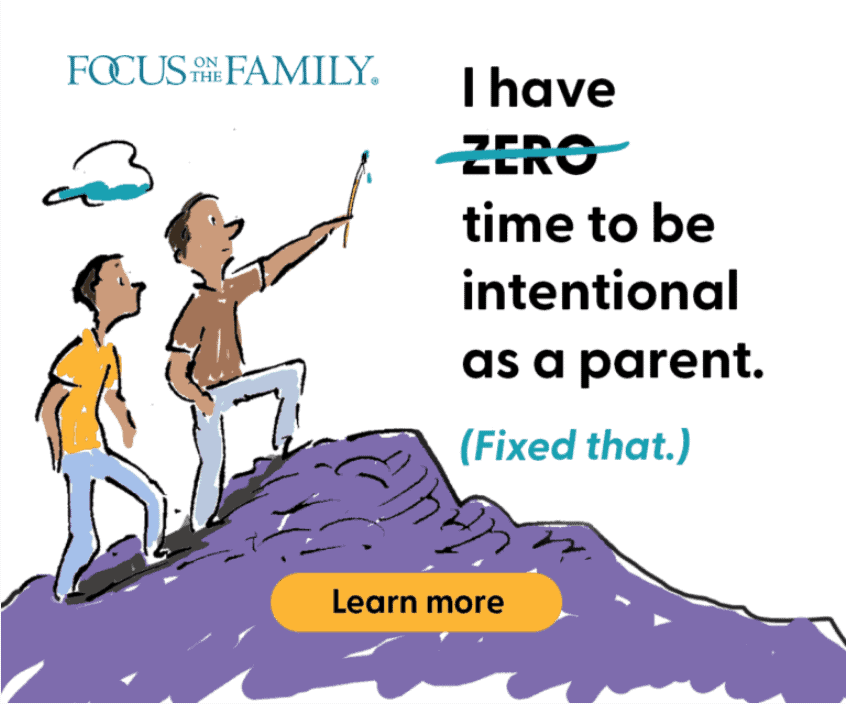Jenni Paul was playing an online game one day when she was rudely chastised by its leader for asking why several people weren’t playing. But when she tried to share her feelings with her husband, Dr. Bob Paul, his reaction upset her even more. Soon, both were annoyed with each other. What began as an issue outside their marriage ended up becoming a marital spat. Unknowingly, they had pushed each other’s hot-button issues.
Pushing unrecognized emotional hot buttons that lie beneath the surface of a couple’s conversation is a common problem in marriages, says Bob, who serves as the vice president of the Focus on the Family Marriage Institute. As the primary architect of the Hope Restored Marriage Intensive programs and a licensed professional counselor, Bob has seen how couples end up in a reactive cycle of pushing each other’s buttons without realizing what’s really happening at the heart level.
“We’ve learned that when you get into conflict with your spouse, it doesn’t matter what you’re arguing about, there will be an eerily familiar feeling to it,” Bob explains. “We’re talking about something different. We’re arguing about something different. Why does it feel so much like the last [argument]?”
But husbands and wives can learn to recognize their hot buttons. Once they do that, they can begin to avoid the frustrating cycle of reacting to each other’s underlying emotional fears and vulnerabilities. Becoming aware of the cycle and your hot buttons is the first step toward healthier communication with your spouse.
What’s a hot-button issue?
It’s easy to tell when hot buttons are pushed in a conversation with your spouse, Bob says. In Nine Lies That Will Destroy Your Marriage and the Truths That Will Save It and Set It Free, Bob and coauthor Greg Smalley define hot buttons:
“One moment you’re having a conversation with your spouse about money or household chores, and the next minute one or both of you suddenly feel:
- Unloved.
- Disrespected.
- Like a failure.
- Controlled.
- Abandoned.
- Inadequate.
- Worthless.
- Not good enough.
- Invalidated.
- Unimportant.
- Misunderstood.”
Everyone has hot buttons, Bob explains, which are the places where you are most vulnerable, likely because of something unpleasant or painful from your past.
“We all acquire these bruises, these wounds along the way,” Bob says.
How hot buttons work
To help couples recognize their own hot-button issues, Bob and Jenni share their own. As they dissect their argument about the online game discussion, they illustrate how these hot buttons cause a cycle of bad reactions and miscommunication.
Bob explains what he’s learned are his hot buttons: “I hate feeling controlled. I hate feeling helpless and powerless,” he says. “I hate feeling inadequate, misportrayed or misunderstood. And I react even in the anticipation of feeling those things. When the button gets pushed, I will knee-jerk react. It doesn’t take any thought, any deliberation. I will complain, get defensive, go into fix-it mode and talk about who’s right and who’s wrong. Now, what I really want, however, is to feel accurately portrayed. I like to feel successful. I hate failure.”
Jenni’s hot buttons aren’t the same as Bob’s. She doesn’t like feeling controlled, suppressed, invalidated, judged or ignored. When Bob unwittingly pushes her hot buttons, her typical reactions are anger, blame, defensiveness, judging or pointing out what’s right and wrong.
When Jenni tried to tell Bob about the online game incident, Bob wanted to be helpful and “fix” his wife’s problem. His answer, however, “didn’t land well,” he says. Jenni agreed.
Hot button #1
“When he goes into fix-it mode, I feel judged,” she says. During the conversation about the online game, Jenni said she felt as if Bob told her that she was at fault. “And when I started to react to that and talk to him, the words that came out were defensive words.”
Hot button #2
Bob had unknowingly hit Jenni’s hot button of being judged. Then her reaction to his comments hit one of his hot-button issues. “I was trying to be helpful, and clearly it wasn’t being perceived as helpful,” he says. So, then he felt misunderstood. Jenni had unknowingly hit his “misunderstood button.”
As you can probably see, this reactive cycle can turn innocent disagreements into major arguments that befuddle couples. Spouses need to understand that hot buttons are underlying emotional fears, Bob explains. And when we feel emotional fear, our bodies react.
“Our brain processes emotional fear in the same way as physical fear. When we feel afraid, it doesn’t matter if something’s actually there, the thought of something that worries us triggers the same brain process,” Bob says.
That process is called an “amygdala hijack.” When the amygdala (a gland in the brain) is triggered, it sends a message that releases hormones such as adrenaline, which readies us for fight or flight mode. The flood of hormones causes a shift in blood flow, so blood leaves the brain and heads to the extremities. This physical response doesn’t help clarity of thought, Bob explains.

Recognize your hot buttons
That physical response can help you recognize your hot-button issues, however. “We ask clients all the time, ‘What happens in your body that’s the tipoff that you had a button pushed?’ It’s a little different for everybody,” Bob explains. “It’s like the red light flashing on the dashboard, and you say, ‘Whoa, I am stirred up.’ “
For example, people might feel heart palpitations. “Or you get a flushed feeling or feel that energy of anger coming on you,” Jenni notes. Instead of blaming your spouse in that moment, you can consciously realize that he or she mistakenly hit one of your hot buttons. “When you feel that, you can go to the Lord,” she says. “You can say, ‘Oh, my hot button got pushed. I’m going to talk to God about this.’ ”
Once you understand your hot buttons and how the reactive cycle works with your spouse, this unconscious cycle can become conscious. That’s when you can begin to choose alternative reactions, Bob says. You then have the choice to react in a more Christlike manner and create a better, more satisfying relationship.
Manage your hot buttons
You can find more information about the reactive cycle in Nine Lies That Will Destroy Your Marriage and the Truths That Will Save It and Set It Free. The book also offers tips for managing your hot-button issues, including these:
Don’t react
The key to breaking the reactive cycle is to create space between your button and your reaction — this means don’t react! It takes self-control to stop the cycle, and if you are really triggered, it may feel like it takes superhuman strength, but you can do it!
Call a time-out
Talk to your spouse about what you can say in the moment that will help him or her to understand that you are taking a time-out and aren’t withdrawing. Maybe it’s a special phrase such as “Code Red” or a signal.
Accept your feelings and move on
The powerful feelings both you and your spouse experience should not be judged as good or bad, right or wrong. Rather, they should be seen as providing you with valuable information you need… Remember that your goal is not to judge or fix but simply to understand and care.
Map your reactive cycle
Take a close look at how you both react. Write down some examples of your reactive cycles when different buttons are pushed… Then consider and discuss possible ways you each can demonstrate caring toward the other when your buttons have been pushed.






















